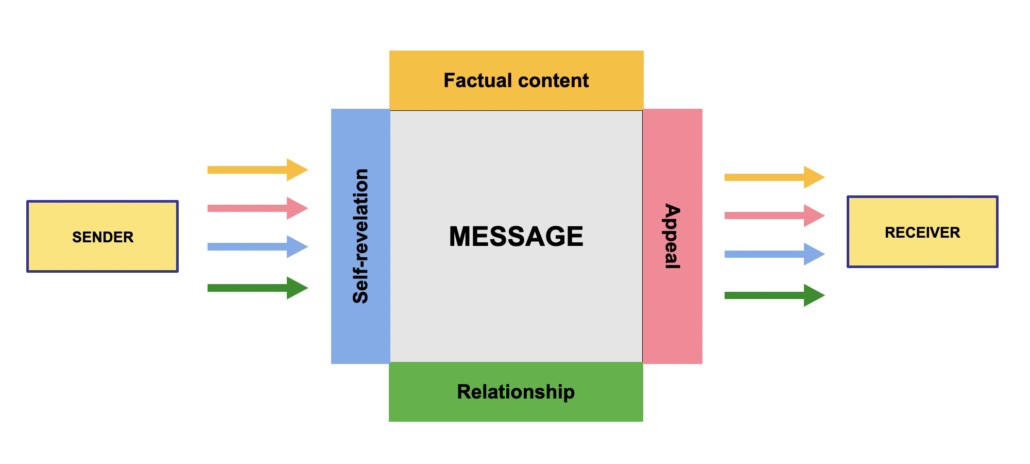Communication and interaction play a significant role in the management and motivation of employees, as well as in the realization of success in the company. Communication can be described as the „lubricant“ in organizations.
No engine runs without oil – and neither does any company. However, its successful design requires a broader understanding. Empirical studies on the everyday work of managers have shown that they (have to) use most of their working time to communicate verbally with others. Only through communication and interaction are individual activities in the company coordinated – even stimulated – and aligned with the overall corporate goal.
The basic process of interpersonal communication is quickly described. A sender wants to communicate something. He encodes his request in recognizable signs – we call what he sends his message. It is up to the receiver to decode this perceptible structure. In doing so, he receives information about the sender’s voice, facial expressions and gestures.
To appear authentic, these three aspects should convey the same thing. As a rule, the content of the message sent and received is halfway consistent, so that an understanding has taken place. However, in order to verify the quality of the understanding, feedback is needed from the receiver.
„The four sides of a message“, developed by Friedemann Schulz von Thun, is a widely used model with high practical relevance.
Inhaltsverzeichnis
The „4 Sides model“, developed by Friedemann Schulz von Thun
According to Schulz von Thun, three things are evident in interpersonal communication:
- Clarity is a four-dimensional matter.
- One and the same message contains many messages at the same time.
- The four aspects are of equal importance

According to this model, every process of verbal interpersonal communication must be considered from four sides (when considering nonverbal utterances, the factual content is usually omitted).
- Factual aspect: „How can I communicate facts clearly and understandably?“ Factual information is given. (It is…)
- Relational aspect: „How do I treat my fellow human being by the way I communicate?“ This message further reveals how the sender relates to the receiver, what he thinks of him. (We are…, You are…).
- Self-revelation aspect: „What am I communicating about myself in the communication?“ In every message there are also messages about the sender’s motives, feelings, values, thus including both intentional self-representation and involuntary self-disclosure. (I am…)
- Appeal aspect: „What do I want to achieve with my message?“ Almost all messages have the function of making the receiver do something. (I want…, You shall…)
The same questions can and should be formulated for the reception of messages when considering interpersonal communication. As a recipient, one should analyze the four aspects with regard to their congruence. Mostly the factual aspect is then not so important and the actual content „hides“ in the appeal. Both the sending and the receiving of all aspects except the factual content can be conscious or unconscious.
The model is not only very suitable for the analysis of concrete messages, but also for the detection of communication disturbances or for the structuring of a problem field.
Example: In many organizations, the allocation of resources is often based on self-presentation – whoever can sell themselves better and has the most convincing arguments receives more resources. However, due to the given structure of this model, corresponding communication events can be analyzed relatively well and thus allow a „look behind the scenes“.
An example of communication that has not been successful:
A man and woman are sitting down to eat. The man remarks, „There’s something green in the soup!“
According to Schulz von Thun, the following conclusion is reached from the man’s point of view:

However, from the woman’s point of view, the analysis may look like this:

Accordingly, the woman responds by saying, „Cook it yourself if you don’t like it!“
Conclusion
According to Schulz von Thun’s model, communication is only successful when the four aspects are congruent and are perceived as such. The message received should be as similar as possible to the message sent, and in all four aspects. Ultimately, therefore, one has communicated successfully when the appeal leads to the intended actions and results.
